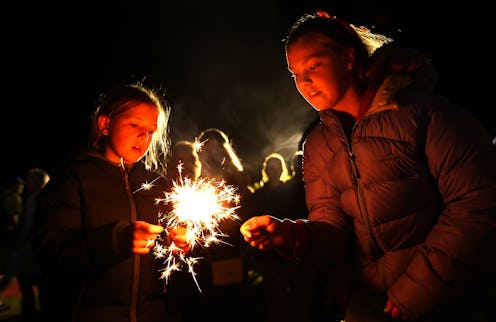Life
How Do Sparklers Actually Work?
You probably spent a decent amount of time as a kid waving sparklers around on the Fourth of July, but did you ever stop to wonder how sparklers actually work? After all, they kind of defy expectations: Normally, when you light something on fire it either burns or, in case of regular fireworks, explodes. How do sparklers just, well, sparkle? Here to finally answer that question for you is the American Chemical Society in a new video.
I grew up in a state that heavily restricted what kind of fireworks you could buy, but sparklers were everywhere on the Fourth of July — because it wasn't like we had many other options. I was always skeptical of them, though. It wasn't until I was 10 or 11 that I honestly believed they weren't going to burn me. After all, they were launching a shower of fiery sparks into the air — how could they not burn you?
But it turns out there's a good reason why sparklers work the way they work, and it all comes down to the various ingredients that go into making them. And while this scientific explanation might not have made much sense to me as a child, as an adult, it's pretty fascinating.
Here's the basic breakdown:
1. Sparklers Have A Few Key Components
A sparkler consists of an iron rod coated in a combustible paste that has several chemical components (the ones listed here).
2. The Reaction Is Fueled By Oxygen
When you light the sparkler, these components are fueled by oxygen; they also chemically break down into (among other things) more oxygen, further fueling the reaction so that it can be even more dramatic.
3. The Binding Slows It Down
So why doesn't it all burn up in a hurry? Because there are chemical components that not only bind the ingredients together, but also slow the process down so you can enjoy it longer.
4. So Why Doesn't It Burn You?
And this is the real question. The answer isn't because sparklers aren't hot; in fact, the little metal bits that break off and burn in the air can get over 2,000 degrees Fahrenheit, more than 10 times the boiling temperature of water. But because the pieces are so incredibly small, they still don't have very much thermal energy, no matter how hot they burn. So there isn't enough thermal energy to hurt your skin.
Neat, right? May your holiday weekend celebrations be full of sparklers and fun. Happy Fourth of July!
Images: Reactions/YouTube (4)
